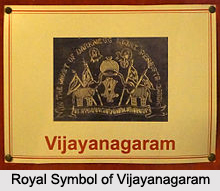 Pusapati, also known as `Poosapati` was a clan of Kalinga Vizianagram, which came into existence around the latter part of the 16th century AD. They belonged to the `Suryavanshi` sect and were ruling `Kshatriya`.
Pusapati, also known as `Poosapati` was a clan of Kalinga Vizianagram, which came into existence around the latter part of the 16th century AD. They belonged to the `Suryavanshi` sect and were ruling `Kshatriya`.
History of Pusapati
The royal families of the Pusapati clan were known to be the descendants of the Perichhedi rulers. These rulers had created `Bezawada`, which constitutes the present-day Vijayawada and was located across Krishna River. Pusapatis had built yet another capital city at Kollipaka and resided there for nine centuries. They patronised Hindu Dharma.
Historical accounts have stated that the Perichhedis had altered their family name to `Pusapati` after they had shifted to the coastal areas of Vijayawada. Their name is a derivation from the Sanskrit term `Pushavat` which implies the sun. This name was utilized since it determined their rich lineage of `Suryavanshi`. Vizianagram city was found by the Pusapati clan and it was named after Vijay Rama Raju. Following the battle of Nandapur, they were granted the prestigious title of `Gajapathi`, around the 16th century.
The Ranas of the region of Udaipur are believed to have been the ancestors of the Maharaja of Vizianagram. The Vasistha `gotra` and Sisodia sect of `Guhilot` tribe are also said to have been the ancestors of The Ranas of Udaipur. In the year 1484, Pusapati Rachi Raju had composed the `Vasistha Gotra Kshatriya Sisa Malika`.
The Gajapathi emperor of the state of Orissa had become allies of the Pusapati Rajas, and they fought against the Vijayanagara Empire. This had occurred after Krishna Deva Raya had invaded the Vijayanagara Empire. Sultan Kali, who had founded the Qutb Shahi dynasty had conquered the allies of Vijayanagara Empire. By the year 1652, the fifth ruler of the Pusapati lineage became the `Subehdar` of the Northern Circars. The Mughal Emperor Aurangzeb had gifted the Pasupati rulers a beautiful double-edged sword known as `zulfiqar`, which is still utilized in the royal family`s coat-of-arms. They had constructed a fort at Vizianagram by the year 1713 and they had dwelt here since that time. Maharajah Vijay Rama Gajapati Raju III had been the recipient of numerous honours which had been conferred upon him by the British Government in 1827. He had also been granted the grand title of `His Highness`, by Lord Northbrook who had also enrolled his name amongst the royal chiefs who would be respected by a 13-gun salute.
Rulers of Pusapati
| Pusapati Amala Raju (Founder of Pusapati dynasty) |
| Pusapati Rachi Raju |
| Pusapati Tama Bhupaludu (1620-1670) |
| Pusapati Peda Vijayarama Raju (1670-1757) |
| Pasupati Ananda Raju (1760) |
| Pusapati Chinna Vijayarama Raju (1760-1794) |
| Pusapati Narayana Babu Raju (1794 - 1845) |
| Pusapati Vijayarama Gajapati Raju (1845-1879) |
| Pusapati Ananda Gajapati Raju (1879-1897) |
| Pusapati Vijayarama Gajapati Raju (1897-1922) |
| Pusapati Alaka Narayana Gajapati Raju (1922-1937) |
| Pusapati Vijayarama Gajapati Raju (1945-1995) |
| Pusapati Ananda Gajapati Raju (1950- ) |
| Pusapati Ashok Gajapati Raju |



















